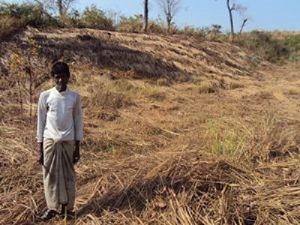Mohammad Belal Uddin
Other projects
14 Mar 2012
Monoculture Plantations in Bangladesh: Consequences for Biodiversity Conservation and Rural Livelihoods
This project is aiming to quantify alpha- and beta-diversity at different land use types and to assess the effects of anthropogenic disturbances on plant diversity at landscape level.

Land Use Changes.
Although tropical forests cover less than 10% of land area, they support the largest terrestrial biodiversity reservoir from the gene to habitat level. However, we know surprisingly little to nothing about the drivers and patterns of biodiversity at landscape to regional spatial scales for many habitats in the tropics. The biodiversity in the tropics is mainly threatened by land use changes and anthropogenic disturbances. They have the impact on biota which is a part of the legacy of the development of biodiversity and ecosystems in many tropical countries.
Due to its unique geo-physical location, the forests of Bangladesh are exceptionally rich in biological diversity. The country has 2.53 million hectares of forest, covering 17.49% of its total landmass. The natural hill forests of Bangladesh are characterized by a large diversity of plant species. An estimated 5 700 species of angiosperms alone, including 68 woody legumes, 130 fibre yielding plants, 500 medicinal plants and 29 orchids, are found in the forests of Bangladesh.
Bangladesh is one of the highest populated countries in the world (1099.3 people km-2). Like other tropical forests, due to high population density, Bangladesh forest ecosystems are experiencing acute threat from rapid land use changes and anthropogenic disturbances. Despite this, only little is known about the consequences of ongoing land use changes and human-induced activities on forest biodiversity in Bangladesh. However, former biodiversity work has been focused on indexing species, diversity of homestead forests, etc. So far, very few attempts have been made to analyse the patterns of plant species diversity in this human dominated landscape, especially with respect to land use changes and anthropogenic disturbances. This is the first geoecological endeavour in Bangladesh forest ecosystems especially from hill forests exploring the effects of land use changes and anthropogenic disturbances on biodiversity.
This project is addressing these issues in protected areas of Bangladesh where spatially explicit examinations of biodiversity patterns as well as disturbance effects are rare or almost lacking as in many tropical countries. Besides, protected areas (PAs) are the most widely used and best-tested way of protecting biodiversity. However, especially there we do urgently need precise and quantitative data which will help forest managers, planners and policy makers to design a biodiversity and natural resource conservation plan that will minimize the pressure on forests, ensures peoples need, optimize biodiversity and nature conservation. This project will conduct this study in one of the north-eastern protected areas of Bangladesh.